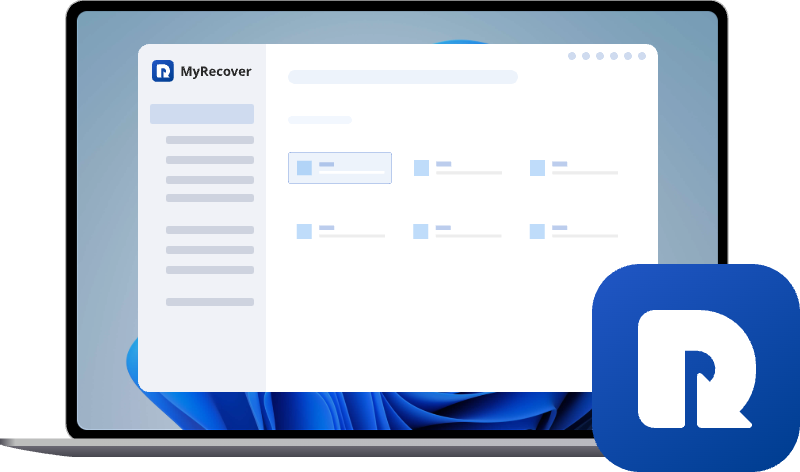Free Quick Format Recovery Software | Download Now
Accidentally performed a quick format on your drive and lost all your important data? Don’t worry. This guide introduces two effective quick format recovery solutions: a command-line tool and a user-friendly GUI tool. Both options can help you recover data from a quick formatted disk or drive with ease and reliability.
Can I Recover Files after a Quick Format?
“I went to format usb drive and accidentally formatted my secondary hard drivewith the “quick format”ticked. I thought I had a backup of the drive but didn’t.Can Irecover the files from a quick format drive?”
Yes, you can recover files after a quick format as long as no new data has been written to the drive. A "quick format" doesn’t completely erase your data; it simply removes the file system structure (like the file table or index), making the space appear empty to the operating system. However, the actual data still physically exists on the drive until it gets overwritten.
Free Quick Format Recovery Software | 2 Options
Although it is absolutely possible to recover data after a quick format, it’s crucial to stop using the formatted drive immediately to prevent data from being overwritten. Then, use a reliable quick format recovery tool to scan the drive and restore your lost files.
In this section, we’ll walk you through two proven recovery methods: one using a command-line tool designed for advanced users, and another with a graphical interface that’s ideal for beginners.
1. Windows File Recovery (Command-Line Tool) -Offered by Microsoft
Windows File Recovery is a free utility developed by Microsoft for Windows 10 and later. It operates through the Command Prompt and allows users to recover deleted files from local storage devices, including internal hard drives, external drives, and USB flash drives, especially when the files are no longer available in the Recycle Bin.
It supports recovery of documents, photos, videos, and more, using different modes like "Regular", "Extensive", and Segment. However, it requires familiarity with command-line syntax, making it better suited for advanced users.
Step 1: Download Windows File Recovery: Open the Microsoft Store on your Windows 10 or 11 PC. Search for "Windows File Recovery", then click "Download" to download and install the app.
Step 2: Open the Command Prompt" as Administrator: Press "Windows + S", type "cmd", right-click on "Command Prompt", and select "Run as administrator".
Step 3: Understand the basic command format: winfr source-drive: destination-drive: /mode /switches
- source-drive: The drive you formatted (e.g., "D:")
- destination-drive: A different drive to save the recovered files (e.g., "E:")
- mode: Recovery mode ("/regular", "/extensive", etc.)
- switches: Options like file filters or folder paths
Step 4: Run a Sample Command. For example, to recover files from quick formatted drive D: and save them to E: using Extensive mode: winfr D: E: /extensive.
To recover deleted files, use "regular" mode instead. To recover specific type of files, add "n" parameter such as "n.*zip" to recover zip files: winfr C: D: /regular /n *.zip
Step 5: Wait for the Process to Complete: The tool will scan your formatted drive and attempt to recover lost files to the destination you specified. Once done, you’ll find the recovered files in a folder named "Recovery\_..." inside your destination drive.
2. MyRecover (GUI Tool) - Beginner-Friendly and Efficient
If you’re not comfortable using command-line tools, MyRecover is an excellent alternative. It offers a clean, intuitive graphical interface that makes recovering data from a quick formatted drive simple even for beginners. This free quick format recovery software supports various file types such as documents, photos, videos, and more. With its advanced scanning algorithms, MyRecover can quickly locate and restore data that was lost due to a quick format or accidental deletion.

- 500+ Devices Support: HDDs, SSDs, USB drives, memory cards, cameras, PS series, and more.
- 500+ Data Loss Scenarios: PNG, MP4, ZIPS, Word, PPT, Emails, Archives, etc.
- 1000+ File Formats: Deletion, format, transfer failure, power failure, virus attacks.
- Filter and Search: Easily find specific files by name, type, or size.
Step 1: Free download and install MyRecover by following the on-screen instructions.
Step 2: Launch the program. On the home screen, select the "formatted drive" where your data was lost (e.g., D:, E:, USB Drive, etc.).Click "Scan".
Step 3: MyRecover will automatically run a "DeepScan" for formatted data to ensure thorough file recovery.
Step 4: Once scanning is complete, browse through the list of recoverable files. Use the "Filter"or "Search" function to find specific files by name, type (e.g., Word, JPG), or size.
Step 5: Select the files you want to recover. Click "Recover" button.
Step 6: Then choose a "different location" (not the original formatted drive) to save the files safely.
After the recovery process finishes, MyRecover will display a confirmation message indicating a successful file recovery and the new path where the recovered files locate now.
Wrap Up
Recovering files after a quick format is entirely possible with the right quick format recovery software. Whether you’re comfortable using command-line utilities like Windows File Recovery or prefer a user-friendly graphical interface like MyRecover, both options offer effective solutions to get your important data back.
Unlike command-line tools, MyRecover doesn't require any technical experience, just a few clicks and you're on your way to getting your files back. Moreover, it also offers two higher editions (Professional and Technician) for more advanced recovery requirements such as recovering data from crash PC, previewing files before recovery, etc.


